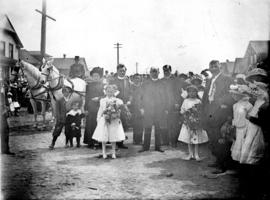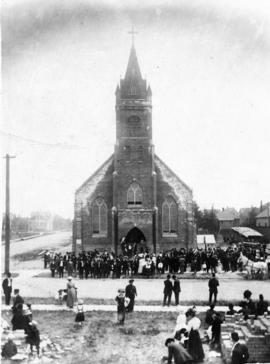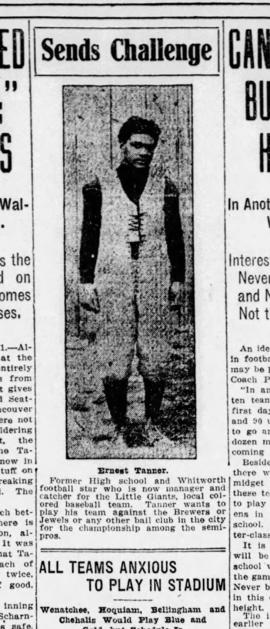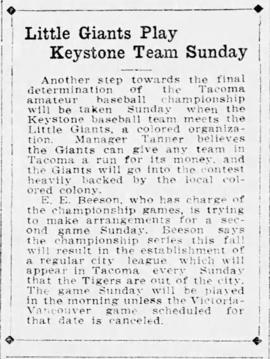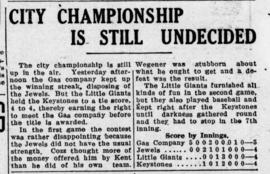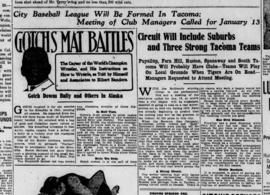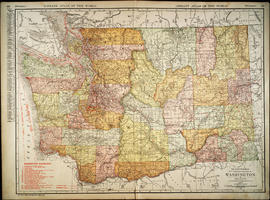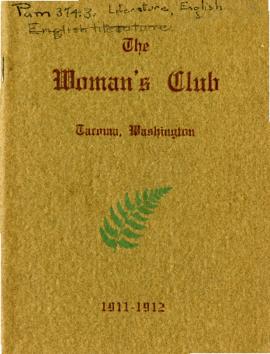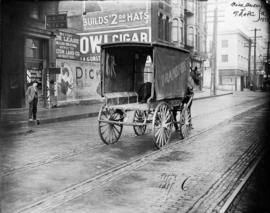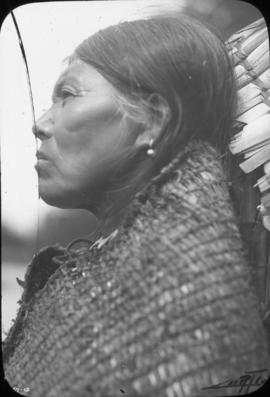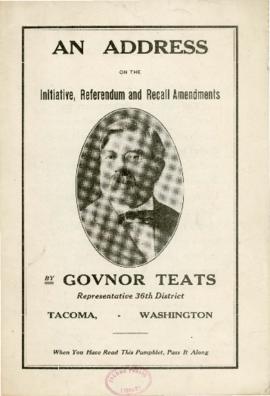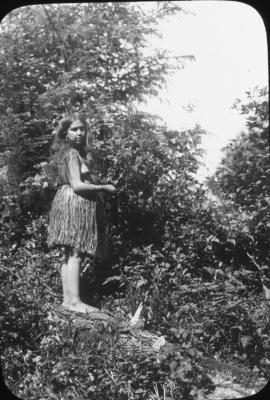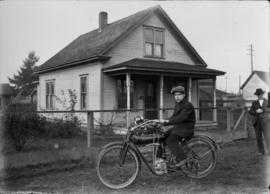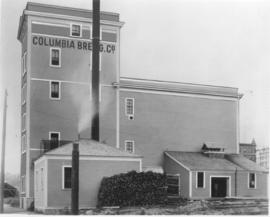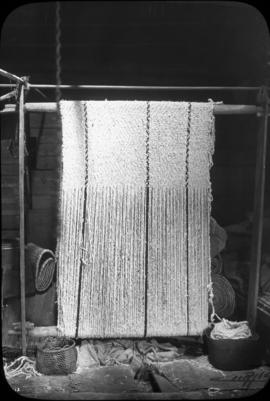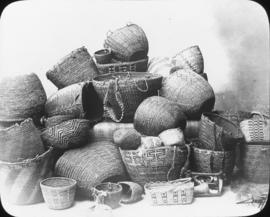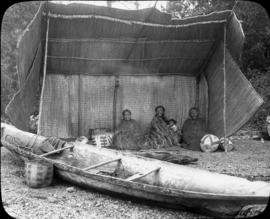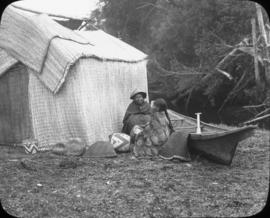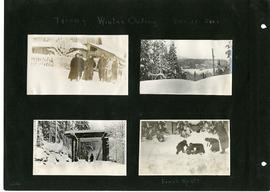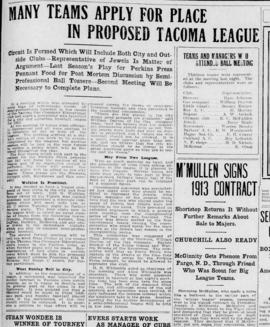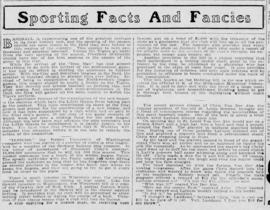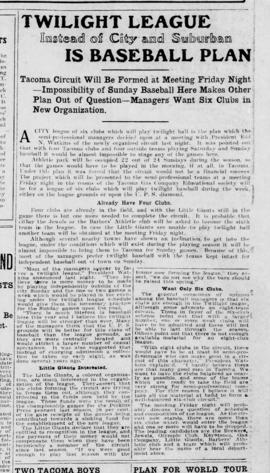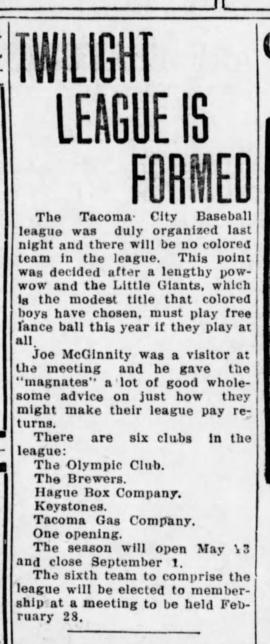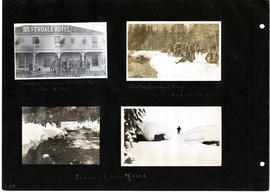- Item
- 1912-05-19
Part of General Photograph Collection
Bishop Edward J. O'Dea at dedication of St. Joseph's Catholic Church, 602 South 34th Street, on May 19, 1912. He was assisted by Rev. Father Paul Kern and Rev. Aloysius Mlinar, rector. Some of the 150 members appeared in this photograph with two young girls carrying large bouquets. St. Joseph's was the first Slovak Catholic church built in the Northwest. The building and ground were paid for entirely by Slavonian church members or those in the Slovak community. The church was built by its congregation who labored after finishing their regular jobs. It was estimated that this volunteer labor saved more than $10,000 in construction costs with the building costs initially set at $25,000. (TDL 5-19-12, p. 33-article)
St. Joseph's Slovak Catholic Church (Tacoma); Catholic churches--Tacoma--1910-1912; Church dedications--Tacoma;
